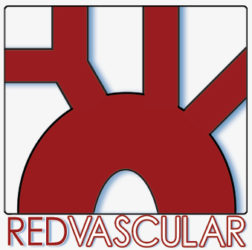- Non-modular, requiring no in situ construction of grafts. Current modular designs greatly increase complexity of deployment, operative time, and potential for complications.
- No risk of device disruption, migration, or leakage requiring complex reintervention or surgical salvage procedures, further exposing patients to possible complications.
- For complex thoracic aortic aneurysms involving the carotid arteries, immediate blood flow is restored to these vessels with less catheter manipulation than with other devices, potentially reducing risk of thromboembolic stroke and postoperative cognitive impairment.
- Non-modular branch grafts act as anchors to prevent graft movement and migration during initial deployment and later. This is particularly important in the thoracic aorta, where large stresses are placed on the delivery mechanism and graft by pulsatile cardiac outflow, flow vortices, and vessel tortuosity.
- Simple, intuitive deployment sequence that leads to fewer mechanical problems and vascular complications.
- Single femoral artery access site for retrograde deployment. This is especially important in thoracic aortic aneurysm procedures. Other technologies require multiple access sites.
- Ability to graft multiple branch vessels regardless of orientation using Red Vascular’s patented vessel alignment system, designed to accommodate disparate arterial take-off positions. This is useful in grafting the renal arteries and branches of the thoracic aorta. No other device has this capability.
- Red Vascular’s endografts are designed as off-the-shelf devices, ready for use immediately and not requiring time-consuming customization, ordering, and production of the devices after diagnosis.
